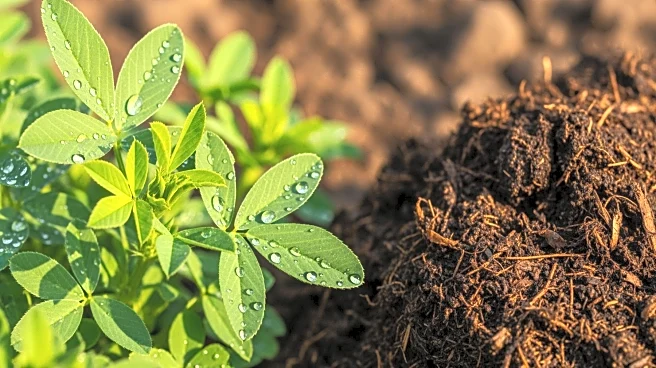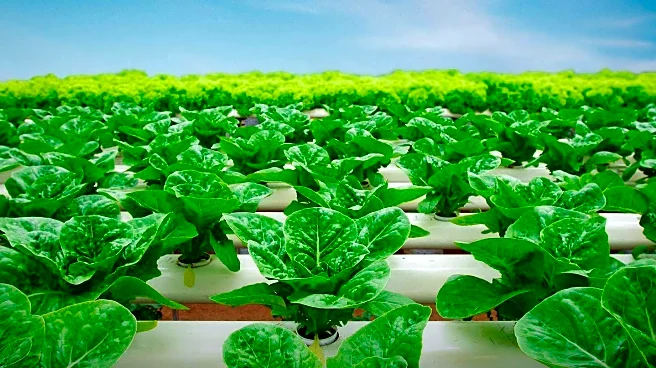What's Happening?
Recent research has investigated the impact of sewage sludge amendments on soil properties and heavy metal accumulation in alfalfa plants. The study analyzed soil and sewage sludge for physicochemical and heavy metal properties, revealing that sewage sludge had
higher levels of certain metals compared to soil. The research found that heavy metals such as lead and nickel showed significant variability in soil amended with sewage sludge. The study also examined the bioaccumulation and translocation of heavy metals in alfalfa, noting that lead had the highest bioaccumulation factor, while manganese showed the highest translocation ability. The findings suggest that sewage sludge can enhance soil organic matter and heavy metal content, influencing plant growth and productivity.
Why It's Important?
The study's findings are significant for agricultural practices, particularly in regions where sewage sludge is used as a soil amendment. Understanding the accumulation and translocation of heavy metals in crops like alfalfa is crucial for ensuring food safety and environmental health. The research provides a framework for evaluating the safe application of sewage sludge in agriculture, which can help mitigate the risks of heavy metal contamination in food and feed crops. This is particularly relevant for U.S. farmers and policymakers who are looking to balance agricultural productivity with environmental sustainability.
What's Next?
Future research is recommended to focus on long-term monitoring of soil and crop contamination under repeated sewage sludge applications. Evaluating different crop species with varying uptake capacities and integrating predictive models with risk assessment frameworks will be essential to ensure food and feed safety. These steps could lead to improved guidelines and regulations for the use of sewage sludge in agriculture, potentially influencing policy decisions and farming practices in the U.S.
Beyond the Headlines
The study highlights the complex interactions between soil properties and heavy metal uptake, emphasizing the role of soil pH, organic matter, and electrical conductivity in metal bioavailability. These findings could lead to advancements in soil management practices, promoting sustainable agriculture and reducing environmental pollution. Additionally, the research underscores the importance of developing predictive models to assess heavy metal contamination, which could enhance consumer safety and support regulatory efforts.














